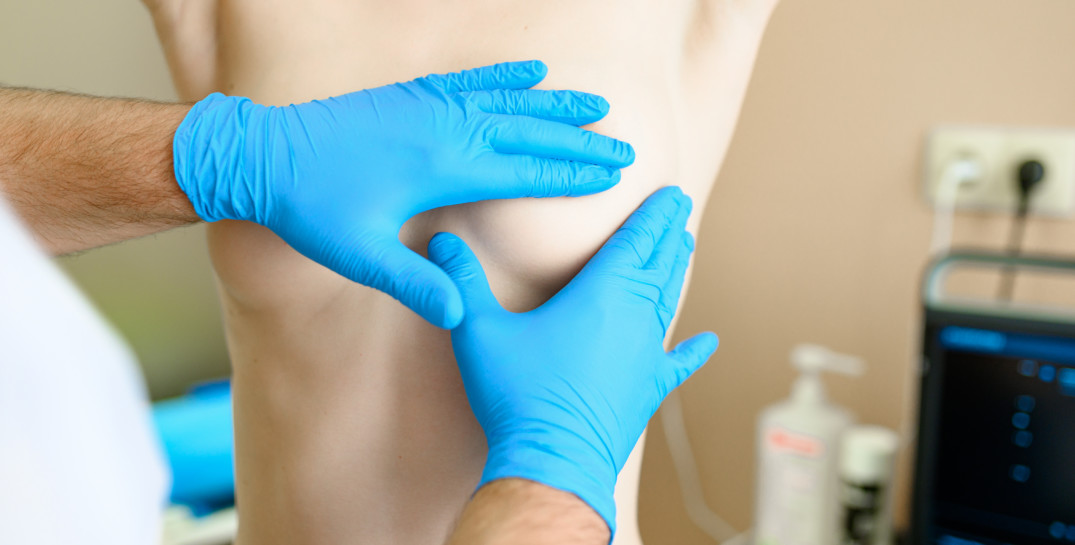Breast cancer screening Part II

Early detection of breast cancer saves lives. What screening methods are available and what can you expect in the process?
So far, mammography is the most popular screening method. It is well-known to both patients and doctors. Unfortunately, some women find it uncomfortable. In this part, we will focus on other breast cancer screening methods that you can consider. Some of them are established in breast cancer screening, while others are relatively new and require additional research. Your doctor will help you choose the right one.
Remember that every woman should be screened for breast cancer routinely. Knowing your diagnostic options and your anatomy is essential for choosing which method of screening you should utilize. Consider different options when making your choice. Lastly, acquaint yourself with the causes of breast cancer.
CURRENTLY AVAILABLE SCREENING METHODS
MAGNETIC RESONANCE IMAGING
Breast MRI (Magnetic Resonance Imaging) uses a superconductive magnet and radio waves to create a series of more-detailed images of the breast. It is an excellent diagnostic tool, better than mammography and even 3D mammography in detecting cancer, but also may find abnormalities in breast structure that are not dangerous (so-called ‘false positives’). As a result, a woman may be subject to other (usually invasive) diagnostic procedures and suffer unnecessary stress. This is why this method is recommended only for women with a high risk of breast cancer.
Breast MRI does not use any ionizing radiation, but is not for everyone – metal implants or even just metal particulates somewhere in your body might heat up or move during the procedure. So if you have or even just might have them, make sure to let your doctor know in time. As there is a contrast (‘dye’) injection made during the procedure that may affect your kidneys, your doctor may order additional tests before the examination. An allergic reaction is possible as well. Because of that, this screening method is not for everyone.
DIGITAL BREAST TOMOSYNTHESIS
“3D mammography” (digital breast tomosynthesis) has been developed recently. It is an ‘upgrade’ of the traditional X-ray mammogram. A series of 2-dimensional pictures are used to create a 3D image, thus the name of the method.
It is being proposed as a better solution for women who have dense breasts, as it is a little bit better (in one study, 4 more cases per 1000 women were found) at detecting cancer in the dense breast tissue. Again, false-positive results seem to be a problem (there were 53). This method is also fairly expensive.
SELF BREAST EXAM AND CLINICAL BREAST EXAM
Your breasts can also be examined manually either by you or your doctor. Self Breast Exam (SBE) and Clinical Breast Exam (CBE) are still recommended in some countries, while others (like the US) have given up on those methods as means for early cancer detection. The effectiveness of this method varies from one population to another and depends on the skillfulness of the examiner. It is best that you follow your local guidelines that were tailored for your population (ask your doctor).
If you happen to find a lump in your breast or observe some other unusual symptom, seek your doctor’s advice immediately. You can read more on the early symptoms of breast cancer in [this] post.
BREAST ULTRASOUND
Breast ultrasound is mainly used as an adjunct to mammography or physical examination. For some time, it was advertised as a safe screening method for young women. A poor specificity and ability to detect microcalcifications (small deposits of calcium in the body, typical in breast cancer) limited its usage.
This method also was tested against traditional mammography in detecting cancer in dense breasts and turned out to be reasonably effective (7 more diagnosed cases in 1000 women). At the same time, there were 65 false-positive cases.
We may still come across breast ultrasound as a complementary method to mammography or palpation. This method also gives good results in detecting cancer in dense breasts (7 new cases out of 1000).
EXPLORE INNOVATIVE METHODS FOR BREAST CANCER SCREENING
Parametric Dynamic Imaging – AILIS, the early breast cancer detection method
AILIS is an innovative breast cancer prediction technology. It uses Parametric Dynamic Imaging technology and Artificial Intelligence for early cancer detection and breast cancer risk assessment. AILIS was designed especially for women who have dense breast tissue, as for this group, standard mammograms seem to be less reliable in visualizing cancerous tissue.
With AILIS, the screening process is simple and comfortable: no contact, breast compression, or harmful radiation. Your results will be available in the AILIS app within several minutes! This is a completely new diagnostic approach that will change the way we detect breast cancer forever. It will be released and made available for the public soon. Explore AILIS.
Did we mention diagnosis? Read our article to find out what happens, if any abnormalities are detected during screening.
REFERENCES
- American Cancer Society. How Common Is Breast Cancer? [cited 14.09.2020]
Available from https://www.cancer.org/cancer/breast-cancer/about/how-common-is-breast-cancer.html - American Cancer Society. American Cancer Society Recommendations for the Early Detection of Breast Cancer. [cited 14.09.2020] Available from
- World Health Organization. Breast cancer. [cited 14.09.2020]
Available from https://www.who.int/cancer/prevention/diagnosis-screening/breast-cancer/en/
4. Breastcancer.org. Ultrasound. [cited 14.09.2020]
Available from https://www.breastcancer.org/symptoms/testing/types/ultrasound - Erin V Newton. What is the role of ultrasonography in breast cancer screening? [cited 14.09.2020]
Available from https://www.medscape.com/answers/1945498-167949/what-is-the-role-of-ultrasonography-in-breast-cancer-screening - Cancercare.org. Early Detection and Breast Cancer. [cited 16.09.2020]
Available from https://www.cancercare.org/ - Pavani Chalasani. What is the efficacy of 3D mammography for breast cancer screening? [cited 16.09.2020]
Available from https://www.medscape.com - Breastcancer.org. Adding 3-D Mammography or Ultrasound to Regular Screening Finds More Cancers in Dense Breasts. [cited 16.09.2020]
Available from https://www.breastcancer.org/research-news/add-3d-mammo-or-ultrasound-to-dense-breast-screening









